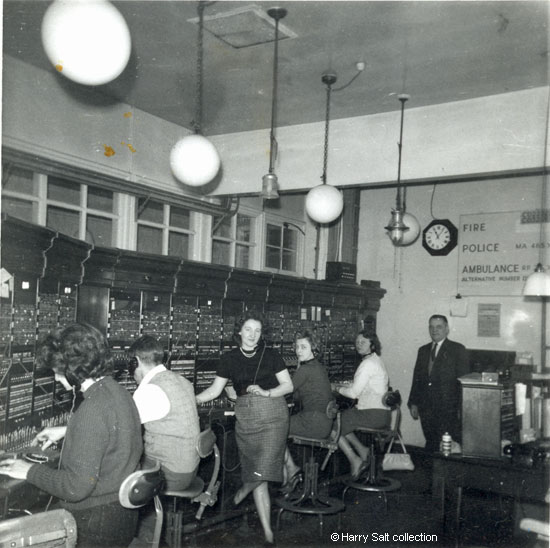|
Images Index> Images of People> This page |
| Matlock: Telephone Exchange, 1956 - the Night & Sunday Staff |
| People who lived in the Matlocks : Photographs, Photographs, Postcards, Engravings & Etchings |
|
|
||||||||||||
The Bank Road exchange had opened on 6th December 1930 and there were then three day time operators. When Matlock's telephone system was first introduced in 1896 there were only 14 subscribers but the new equipment installed in 1930 brought in 250[1]. The switchboard was the latest type of manual equipment. By 1949 there were 1,100 subscribers in Matlock[2]. Whilst not every household had a telephone in the 1950s, some had party or shared lines; these could be a real nuisance if the person you shared with liked to chat. All calls were handled by the exchange personnel at that time, so when a subscriber called in the standard answer was "Number Please" and the telephonist repeated the number asked for back to the caller before making the connection. As for 999 calls, the instruction was to "Answer without delay". There is a large sign on the back wall giving the codes/numbers of the local emergency services - Fire, Police, Ambulance. When connecting, the operators had to note the time and record details of the call which were then handed to the supervisor.
|
|||||||||||||
|
Image and information supplied by and copyright © Harry Salt. Researched, written by and © Ann Andrews. Intended for personal use only. |
|||||||||||||
|
[1] Derby Daily Telegraph", ,
4 December 1930. New Matlock Exchange. "Derbyshire Times",
6 December 1930 - Matlock's
New Exchange. Official Opening Today. |



